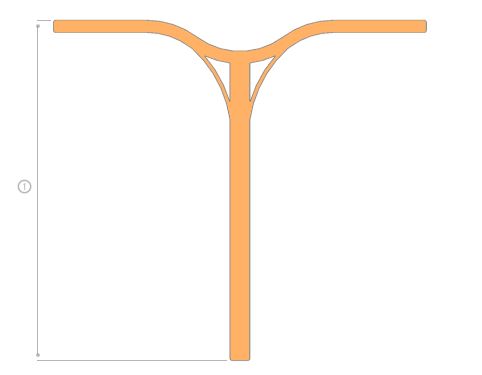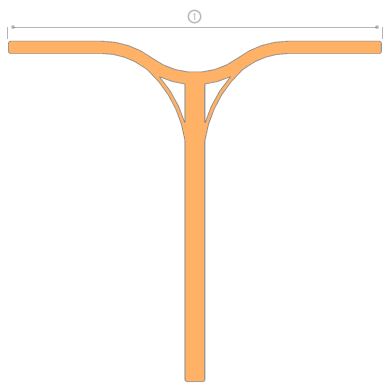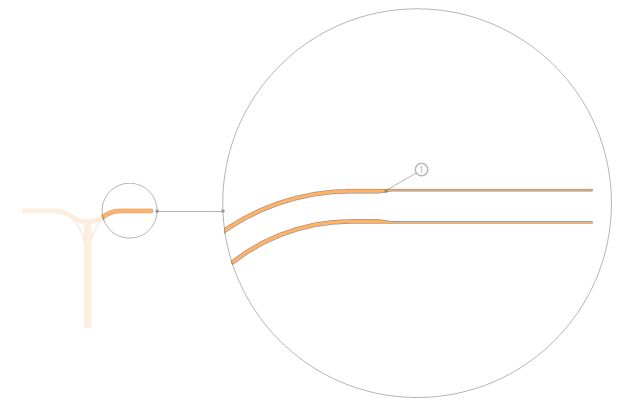General points:
The bars are the second most important part of the scooter. Since the release of the first steel RAD bars in 2006, followed by the aluminum SR ‘Buff’ Bars and FrenchID Pro Bars in 2007, extensible bars become obsolete and were replaced by bars of much few components (typically one-piece.)
Material:
There are two materials that are mainly used for bars: aluminum and steel.
Aluminum bars are very light (between 700g and 900g) which is good for young riders or those who like responsive bars. However, aluminum is much stiffer than steel and the riding comfort is lower. Its resistance is less than that of steel, and it usually just breaks without showing any build-up of stress.
The majority of steel bars (4130 Chromoly) are pretty heavy, roughly between 1000g and 1500g, but they are also more comfortable and less rigid for riders, with much more resistance.
Weight:
The bar’s weight is less important than in other components, as it’s located in an area of the scooter that rarely moves, except for the crossbar. Usually switching from plastic to foam grips has more influence on the feeling than switching from steel to aluminium bars.
As the bar is at the front of the scooter, it can be good to have it slightly more weighted with a steel bar. This can improve the scooter’s overall balance (as mentioned in the Deck info,) but if you really want to have a light scooter, aluminum can be good.
Height:

1 : height
The bar’s height can be measured from the bottom of the bar to the top of the cross bar.
The height depends roughly on your size of course, but also on your person taste. 5 years ago, riding with a 450mm (~18”) bar was normal. Today, bars are usually much higher than that (500 - 650 mm.)
To estimate the size you need, just stand on your scooter, with your back perfectly straight. You should be able to reach your grips with your arms fully extended.
Low bars are good for aggressive riding, and are required to be good at bunny-hops. Higher bars are more comfortable, but will give you a more ‘vertical’ style.
The higher the bars, the further away your hands will be from the deck, so it will be easier to move the deck around. However, bar-spins will be more difficult
Width:

1 : width
Width has changed a lot over the years: 330 mm (13.5”) was the standard in 2007, whereas today it is not rare to see bars even as wide 600 mm (~24”.)
A narrow bar can make bar-spins easy, but aestheticism suffers. Conversely, they will look better with a wider bar, but they will be are harder to do.
Be careful though, as wider bar is subject to more force, so try to choose a good quality brand when choosing a wide bar.
Backsweep:

1 : backsweep
Backsweep appeared on Scooters with RAD Vulture bars back in 2008.
Backsweep is when the horizontal tube is bent backwards towards either end, usually more comfortable for the wrists (this is known as ‘ergonomic’). Some riders prefer to ride bars with no backsweep at all. Once again, it’s a matter of taste.
Upsweep:
Just like backsweep but upwards/downwards instead of backwards. Some bars have a combination of backsweep and downsweep.
Slit:
Bars are slitted to allow the steer-tube to bend and ‘grab’ the forks, under the pressure of the clamp.
Some bars are made with no slit, to be used with an SCS. If you want to use another SCS / HIC / IHC, just take a saw and make a slit on the bars (though they’ll be a smaller size if fitted onto the fork.) Indeed, an SCS is supposed to compress the bar tube to hold it, if the tube has a slit, it will bend and the system won’t be as efficient.
Butted:

1 : butted
Butted is a technology well known and used in BMX. It’s a variation of the tube thickness that allows manufacturers to save weight on the ends of the bar.
It’s a pretty expensive technology, that’s you will only find on very high end bars.
31.8/34.9 :
Originally, all freestyle scooter bars used 31.8 mm (1-1/4”) diameters, but with the release of HIC SCS / HIC / IHC by RAD, tubes with bigger internal diamters appeared.
This allows room for a shim between the fork and the bar as a means of compression (see SCS / HIC / IHCs.)
So think about the SCS / HIC / IHC you wish to use before buying a pair of bars.
My Cart
0
- empty